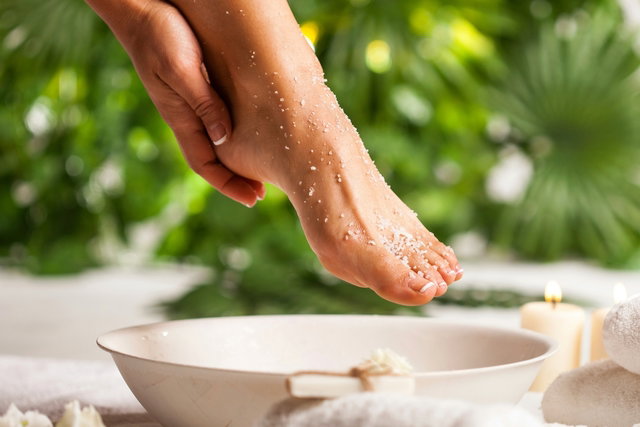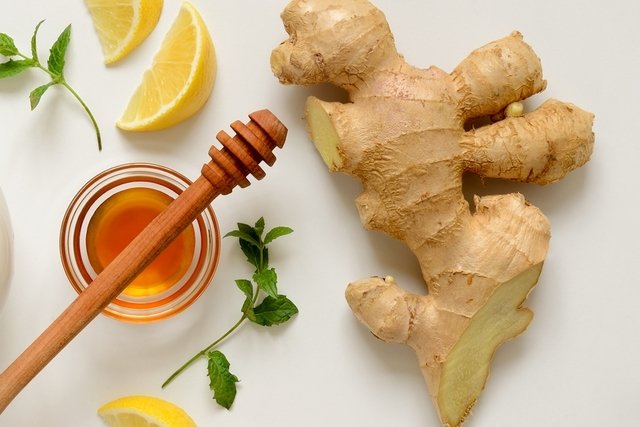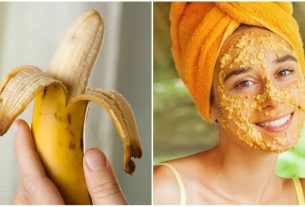Homemade foot scrubs, like the ginger and honey scrub or the coconut oil and brown sugar scrub, are a good way to keep your skin softer and more hydrated, because ingredients like sugar or salt help remove the layer of rough skin and dead cells, in addition to having oils that promote deep hydration of the skin, giving a soft touch to the feet.
Exfoliation removes dead cells from the outermost layer of the skin, where excess keratin can accumulate. Therefore, you must hydrate your skin after exfoliation, so that a protective barrier is formed, with a moisturizing cream or foot oil before going to sleep. See other ways to hydrate your feet.
Foot exfoliation can be done up to twice a week, and it is important to wash your feet with warm water and neutral soap to clean and open the pores, to facilitate the removal of dead cells and allow the oils to better penetrate the skin. Furthermore, as it contains oils, it is recommended to do a test by rubbing a little of the moisturizer on the back of your hand to find out if you are allergic. If your skin becomes red or irritated, using a homemade exfoliant is not recommended.

Some options for homemade foot exfoliants are:
1. Ginger and honey scrub
The ginger and honey scrub helps to remove dead cells and hydrate the skin, as well as having a softening effect on the feet.
Ingredients
- 1 spoon of refined or crystal sugar;
- 1 spoon of powdered ginger;
- 1 spoon of honey;
- 3 spoons of sweet almond oil.
Preparation mode
Mix all the ingredients very well and after forming a paste, apply to the feet, rubbing with quick, circular movements, focusing on the roughest areas, such as the heel and instep. Then, simply rinse with warm water, dry with a towel and apply a moisturizing cream suitable for your feet.
2. Corn, oat and almond scrub
The corn, oat and almond exfoliant, in addition to promoting cell renewal, this exfoliant also contributes to skin hydration and nutrition.
Ingredients
- 45 g of fine corn flour;
- 30 g of finely ground oat flakes;
- 30 g of ground almonds;
- 1 tablespoon of almond oil;
- 10 drops of lavender essential oil.
Preparation mode
Mix all the ingredients in a container and then rub on feet previously wet in hot water and massage in circular movements. Finally, rinse your feet with water and dry well.
3. Salt and essential oil scrub
Peppermint, rosemary and lavender essential oils provide a revitalizing exfoliation.
Ingredients
- 110 g of sea salt;
- 2 drops of peppermint essential oil;
- 3 drops of rosemary essential oil;
- 5 drops of lavender essential oil;
- 2 tablespoons of almond oil.
Preparation mode
Add essential oils and almond oil to sea salt, mix well and massage previously wet feet in circular movements and, finally, rinse with warm water and dry with a towel.
See also how to give an invigorating foot massage.
4. Coconut oil and sugar scrub
Coconut oil helps to deeply hydrate the skin for a long time, reducing its rough appearance and helping to eliminate cracks and scales on the feet. Furthermore, brown sugar promotes skin exfoliation, helping to remove dead cells, facilitating the penetration of coconut oil into the skin.
Ingredients
- 2 tablespoons of coconut oil;
- 3 to 4 tablespoons of brown sugar;
Preparation mode
Heat the coconut oil until it reaches a semi-solid consistency so that it can be kneaded with a fork and added to the sugar. Mix and apply to clean, dry foot skin, using gentle circular movements. Then rinse your feet and dry with a clean, dry towel.
To maintain hydration, you can also apply coconut oil to your feet before going to sleep and put on a sock.
Also watch the following video with other tips for treating dry and cracked feet:
Bibliography
- DEEN, A.; et al. Chemical composition and health benefits of coconut oil: an overview. J Sci Food Agric. 101. 6; 2182-2193, 2021
- LIN, Tzu-Kai; et al. Anti-Inflammatory and Skin Barrier Repair Effects of Topical Application of Some Plant Oils. Internation Journal of Molecular Sciences. 19. 1; 70, 2017
- DRAELOS, ZD The science behind skin care: Moisturizers. J Cosmet Dermatol. 17. 2; 138-144, 2018

Sign up for our newsletter and stay up to date with exclusive news
that can transform your routine!
Warning: Undefined array key "title" in /home/storelat/public_html/wp-content/plugins/link-whisper-premium/templates/frontend/related-posts.php on line 12
Warning: Undefined array key "title_tag" in /home/storelat/public_html/wp-content/plugins/link-whisper-premium/templates/frontend/related-posts.php on line 13





